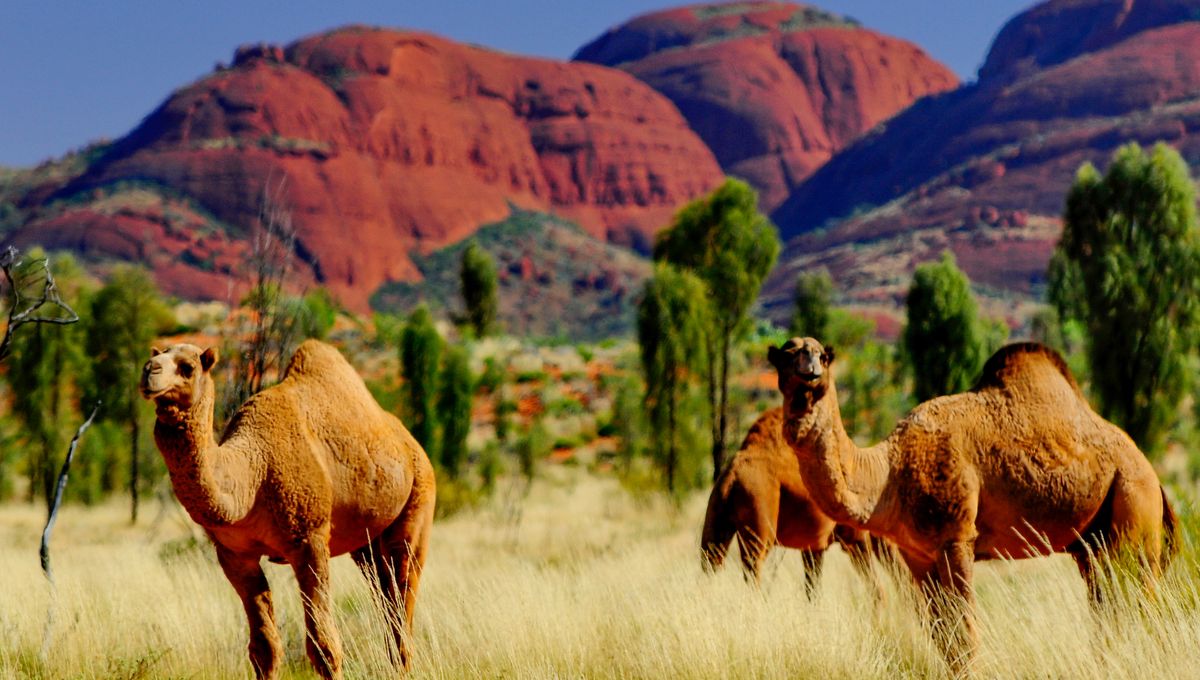
If asked to name countries with the most camels, most people would probably go for somewhere in the Middle East or North Africa. Australia is unlikely to get a mention, but not only does it have more camels than many places where they are a big part of the culture, but it may soon challenge for the largest camel population of all.
That may come as a shock, because visitors to Egypt, for example, will find themselves beset with offers to visit ancient sites on a camel’s back or buy camel-shaped mementoes in many forms. Neither is very likely in Australia, where camels are more of a dirty secret. No one has done an exact count of every country’s camels, but the Guinness Book of Records notes Australia has the most non-domesticated camels by far.
Somalia, Chad, and Sudan, where camels are used as livestock, are still rated as the places where camels are most abundant. However, Australia is rising rapidly up the charts, and could be near the top quite soon without drastic action.
Camels originally evolved in North America, but crossed to Asia when the Bering Land Bridge was extensive around 6-7 million years ago. Some combination of the end of the last ice age and the arrival of humans did the American camels in, although relatives like llamas adapted to the new arrivals’ presence.
Meanwhile, camels had conquered much of Asia and Africa, but crossing the Wallace Line to reach Australia was beyond them. Unlike some recent arrivals to that continent, they also couldn’t get there by stowing away in someone’s luggage or the ballast water of a ship. Instead, when confronted with challenges of building a telegraph line through the desert and generally getting around Australia’s vast, dry interior, colonial authorities hired cameleers from Afghanistan and what is now Pakistan to provide transportation with their dromedaries.
Some camels probably escaped during this time, but it was the rise of the car that led to large numbers of feral camels, as many were turned loose once machines took their jobs.
In the arid interior, the pensioned-off camels found heaven for ungulates capable of going for long periods without water. In their home range, they had to watch out for predators, or people wishing to press them into service. In Australia, they faced no such danger unless they roamed far enough north to reach crocodile country.
Long-lived species usually don’t multiply fast, but faced with so little restriction and little in the way of competition, camel numbers took off, although it was a century before the problem started to draw attention. Culls have reduced camel numbers by at least 100,000, but with estimates of those still roaming the interior ranging from a few hundred thousand to several million, that’s a minor speed hump on the road to continental dominance.
To an ecosystem adapted to nothing bigger than a human or a red kangaroo, camels have been a catastrophe. Each camel eats vastly more of the local vegetation than any native animal, displacing many species, including endangered ones. Camels’ capacity to go for days without water and then replenish themselves rapidly can see waterholes that others rely on drunk dry or fouled. On the positive side, camels do control the spread of weeds and may reduce wildfires.
Meanwhile, across their home range, camels are now overwhelmingly domesticated. Around 1,000 Wild Bactrian camels survive in China. The Bactrian camel, a different species, and the Dromedary are overwhelmingly kept for meat, milk, or carrying people, although small native populations and escapees survive in remote locations.
Source Link: Australia Has More Camels Than Egypt Or India, And That’s Not Good